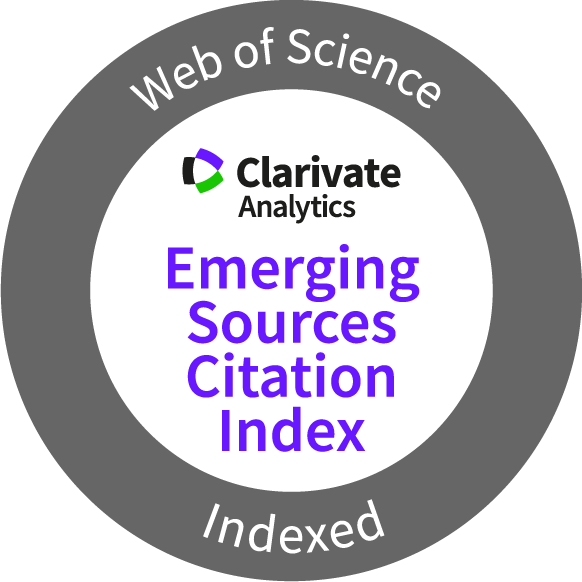Struktur Bahasa dan Seni Pengimejan dalam Puisi Mengenang-Mu Karya Kemala: Kajian Retorik Berdasarkan Teori ‘Abd al-Qāhir al-Jurjānī
Linguistic Structure and Imagery in the Poem Mengenang-Mu by Kemala: A Rhetorical Study Based on the Theory of ‘Abd al-Qāhir al-Jurjānī
DOI:
https://doi.org/10.7187/GJATSI122024-17Keywords:
Kemala, Al-Jurjānī, Language structure, Imagery, Poetry, RhetoricAbstract
This study examines the language structure and imagery in the poem Mengenang-Mu by Kemala, a renowned Malaysian poet, writer, and literary figure in modern Malay literature. The objective of this research is to conduct an in-depth analysis of the linguistic techniques used by Kemala in this poem to convey spiritual and philosophical themes, as well as how he employs poetic imagery and symbolism to bridge the tangible world with abstract concepts. The study’s methodology involves a detailed textual analysis of the poem, focusing on linguistic structures and imagery techniques, guided by the theory of ᶜAbd al-Qāhir al-Jurjānī. The findings reveal that Kemala consistently employs complex language structures and rich imagery to express spiritual meaning, transforming his poem into not only a literary work but also a medium for conveying spiritual experiences. In conclusion, Mengenang-Mu reflects Kemala’s ability to merge language structure and imagery in creating a work that is aesthetically beautiful and profoundly meaningful in both philosophical and spiritual dimensions, thereby opening avenues for further research in the field of modern Malay literature. Future research may explore comparative analysis with other contemporary poets, focusing on the philosophical and spiritual themes they explore.
References
Abdullah, A. K. (1983). ‘Ayn: Kemala. Kuala Lumpur: Dewan Bahasa dan Pustaka.
Abdullah, A. K. (2010). Simbolisme dalam puisi Islam di Malaysia 1970-1990. Kuala Lumpur: Dewan Bahasa dan Pustaka.
Abu Deeb, K. (1979). Al Jurjani's theory of poetic imagery (Approaches to Arabic Literature). Oxford: Aris & Phillips Ltd Publishers.
Ali, A. H. (2010). Konsep estetika bersepadu: Terapan dan analisis terhadap karya-karya puisi Ahmad Kamal Abdullah. Perak: Universiti Pendidikan Sultan Idris.
Al-Jurjānī, A. Q. A. R. M. (1954). Asrār al-balāghah. Istanbul: Maṭba’ah Wazārah al-Ma’ārif.
Al-Jurjānī, A. Q. A. R. M. (2004). Dalāil al-`ijāz. Kaherah: Maktabah al-Khaniji.
Chair, B. M. (2021). Sufism in the poems of Ahmad Kamal Abdullah. Malay Literature, 34(1): 89‒102.
Chowdhury, S. Z. (2015). Introducing arabic rhetoric. United State of America: Dar Al-Nicosia Publishing House.
Günaydın, M. (2008). The idea of ‘multiple meanings’ in al-Jurjānī’s theory of composition. İstanbul Üniversitesi İlahiyat Fakültesi Dergisi, Sayı. Seminar of Arabic Literature and Literary Theory (AMES 434) at the University of Pennsylvania in 1996, 127-143.
Hassan, M. M. (1990). Proses penciptaan puisi: A. Wahab Ali, Dharmawijaya dan Kemala. Kuala Lumpur: Perniagaan Bumi Cemerlang.
Hussin, M. dan Yahaya, S. R. (2022). Gaya bahasa kiasan dan retorik dalam Titah Sultan Perak DYMM Sultan Nazrin Shah. Global Journal Al-Thaqafah, 12(2): 136-152.
Ishak, A. dan Samah, R. (2018). The aesthetics of a sufist poet, Ahmad Kamal Abdullah, known as Kemala. Jurnal Islam dan Masyarakat Kontemporari, 17(1): 113-151.
Muhamad, K. (1988). Perbincangan gaya bahasa sastera. Kuala Lumpur: Dewan Bahasa dan Pustaka.
Nor, F. W. M. (2021). Biografi ringkas penerima S.E.A write award. Kuala Lumpur: Dewan Bahasa dan Pustaka.
Pogadaev, V. dan Pogadaeva, A. (2015). Karya Kemala dari segi kriteria sastera antarabangsa. Seminar pemikiran Sasterawan Negara Dato' Dr. Ahmad Kamal Abdullah. 17-18 September 2015. Dewan Seminar Dato' Hassan Ahmad, Menara Dewan Bahasa dan Pustaka, Kuala Lumpur, Malaysia.
Shaffine, N. H. C. (2015). Pemikiran Islam dalam ‘Ayn karya Kemala. Jurnal Melayu, 14(2): 240-259.








